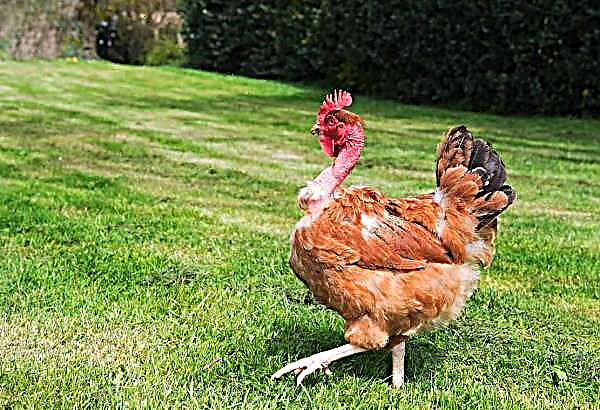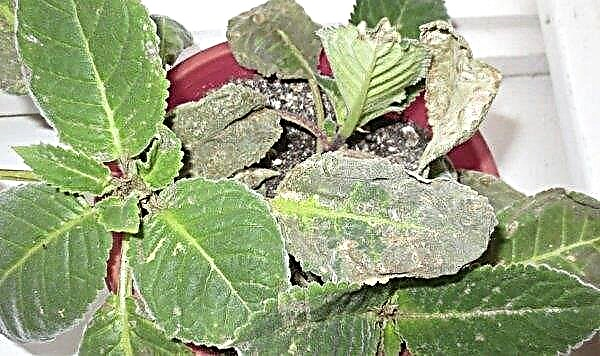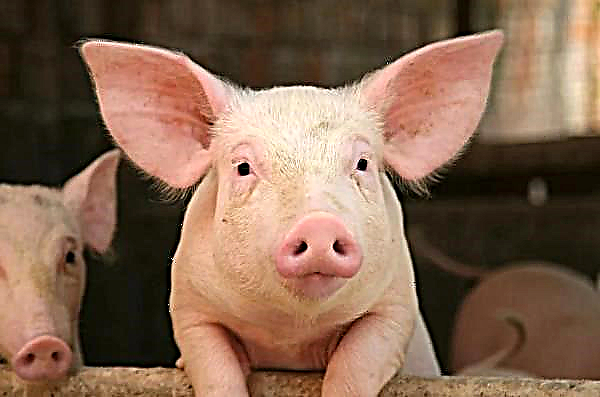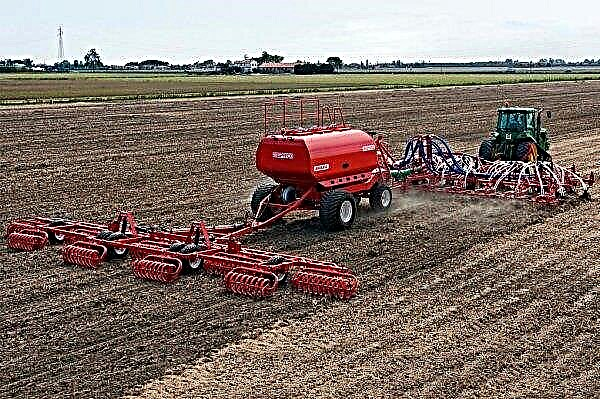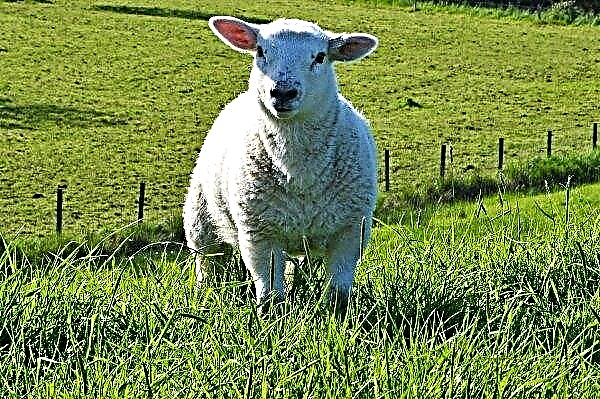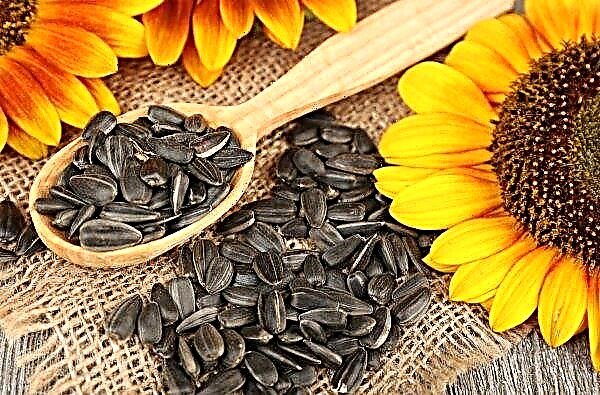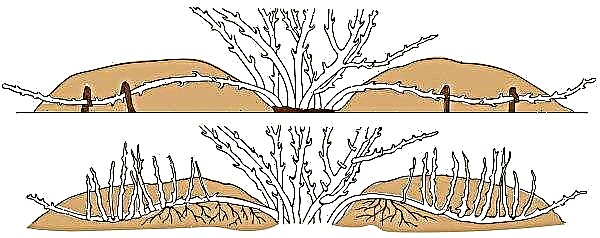Tomato Pink Bush F1 is an early ripe hybrid, bred by Japanese scientists. The variety is unpretentious in care, quickly adapts to the climatic conditions of most regions of our country. Suitable for cultivation indoors and outdoors.
Grade description
General characteristics:
- early ripe variety of tomatoes gives a harvest after 90-100 days;
- bushes of a determinant type, cease to grow at a height of 75 cm in greenhouses and film shelters, 50 cm in open ground;
- a strong trunk forms a small number of lateral shoots - it does not need to be pinch, it requires garter only during the ripening period of the fruit;
- rare leaves, potato type, painted dark green;
- on each shoot a brush of 3–6 flowers is formed;
- the fruits are neat, regular, rounded, painted in a bright pink color;
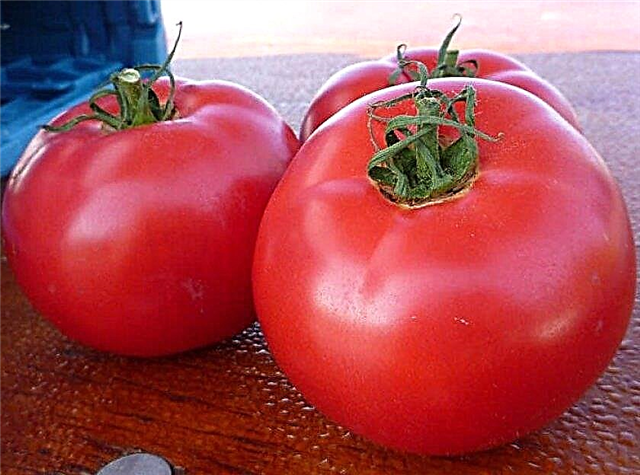
- the first fruits are slightly flattened;
- the mass of one ripe specimen is 180–220 g;
- 6–18 fruits are formed on the bush;
- the peel is dense, shiny, cracking only with excessive moisture;
- the pulp is juicy, fleshy, sweet, with barely noticeable acidity;
- the fruits are resistant to mechanical damage, tolerate transportation well, retain their beneficial qualities for a long time;
- the variety is resistant to late blight, fusarium, tobacco mosaic;
- productivity is 10-12 kg per 1 sq. km. m;
- the compactness of plants allows you to plant per 1 square. m 4-6 copies.
Advantages and disadvantages
- Grade advantages:
- high productivity;
- early ripening;
- good adaptive abilities;
- undemanding to pruning and pinching;
- resistance to diseases characteristic of solanaceous crops;
- the ability to transport products over long distances;
- long shelf life of the crop;
- the possibility of cultivation in open and closed ground.

- The disadvantages of the variety:
- the inability to use seeds from the harvested crop for propagation;
- pickiness seedlings to care;
- high price for seed.
How to grow tomato seedlings yourself
Pink Bush F1 tomatoes are propagated by seedlings. The process requires a special approach. In open areas, the variety is grown exclusively in the southern and southeastern regions. In the northern regions, the variety bears fruit well only in greenhouses.
Important! Tomatoes grow best in areas where legumes or winter crops were grown before them.
Optimum timing for sowing
Sowing is carried out 50 days before the intended landing at a permanent place:
- at the beginning of February - for greenhouses;
- mid March - for open ground.
The soil
To obtain a rich harvest, fertile soil with a neutral acidity of up to 5–6 pH is required. Prepare it in the fall, immediately after harvesting. In an open area, deep digging is carried out - 20–25 cm.
For disinfecting and enriching the soil with nutrients for every 1 square. m contribute:
- 10 kg of humus or liquid mullein;
- 20-30 g of ammonium nitrate.

In greenhouses, instead of digging, they remove 10–20 cm of soil and replace it with the following composition:
- 1 part peat;
- 1 part of sand with coarse-grained structures;
- 2 parts of sod-leaf land.
For seedlings, you can take a ready-made universal mixture for vegetables or mix it yourself using the following ingredients in a ratio of 1: 1: 1: 1:
- sheet earth;
- peat;
- humus;
- river sand.
Important! Leafy land can be typed in a forest belt. Do not take soil from under oak, willow and chestnut. It contains a large amount of tannins, which will negatively affect the development of seedlings.
Capacity for growing
For seed germination, you can use:
- wooden boxes;
- plastic cups;
- peat pots;
- peat and coconut tablets.
Seed preparation
Pink Bush F1 seeds do not need additional disinfection - the manufacturer has already taken care of this. If desired, the seed can be placed for 30 minutes before planting in the root solution.

Sowing seeds
Before sowing, the soil is moistened with a spray. In the general drawers, furrows are made with a depth of 5 mm at a distance of 5 cm from each other. Seeds are laid out in recesses, observing a step of 4-5 cm.
2-3 seeds are placed in separate containers. When sprouts appear, the weaker ones are removed. When planting in peat or coconut tablets, they are pre-soaked in warm water. When the tablet swells, the seeds are placed in a recess, which is located in the central part, and sprinkled on top of peat (coconut fibers). Then the tablets are placed in cassettes or electric propagators, which are containers with a transparent lid and automatic heating.
Did you know? Canned tomato contains 3 times more lycopene than fresh. This substance helps maintain the elasticity of skin cells, slows down the aging process and is an excellent defense against free radicals that cause cancer cell growth.
Regardless of what type of container was chosen, it is covered with a lid or film to create a greenhouse effect. The cover is removed daily to ventilate the soil.
Seedling Care
Until the first shoots appear, seedlings are kept in semi-dark rooms, at a temperature of +25 ° C. Soil moisture is maintained by spraying, within 80%.
With the advent of sprouts, the cover is removed and the seedlings are moved to a well-lit room. The temperature is reduced to +20 ° C. Daylight hours for seedlings should last at least 10 hours. To do this, you can use the diode backlight. The pick is performed when 2 full leaves appear. When growing in peat containers, the picking procedure is not carried out.
When 2-3 leaves appear, they begin to feed plants with universal fertilizers for tomatoes. The second feeding is carried out 2 weeks after the first. Watering is carried out on demand. Soil moisture is maintained within 60–80%.

Seedling hardening
20-30 days before transplanting into the soil, seedlings begin to harden. The period falls at the beginning or mid-April, depending on the timing of landing. The procedure allows you to increase the resistance of plants to the influence of negative external factors and accelerate adaptation in a new place.
Gradually reduce the temperature in the room to +15 ° C. Then, seedlings begin to be placed on the balcony for 1 hour, daily increasing this time by 1-2 hours. By the time when 1-2 days remain before the transplant, the seedlings should be free to withstand 24 hours in the open air.
Planting seedlings in a permanent place
Landing at a permanent place is carried out at the age of 45-50 days. Planting in the greenhouse is carried out in April, in open ground - from mid-May. The temperature of the soil at this moment should be +10 ° С, of the environment - not lower than +12 ° С. Planting scheme is 4-6 bushes per 1 square. m
On the site 2-3 hours before planting, holes are formed with a depth of 20 cm. 2 liters of warm water are added into them with the addition of 2-3 crystals of manganese and 30 g of superphosphate. The temperature of the liquid should not be lower than +18 ° C. When it is absorbed, a transplant can be performed. Plants are transplanted from plastic cups using the transshipment method while preserving an earthen coma. Peat containers are placed in the ground along with plants. The space remaining in the hole is filled with earth and rammed. At the end of the process, 500-700 ml of warm water is poured into the hole and the soil is mulched with compost.Did you know? Tomatoes are biological relatives of potatoes and tobacco. In the treatment of tobacco dependence, it is recommended to introduce tomato juice into the diet. It will help to quickly remove toxins from the body and enrich it with antioxidants, saving the brain from oxygen starvation.
How to care for tomatoes in the open ground
Leaving after a dive to a permanent place is quite simple. It is necessary to observe the basic rules of agricultural technology and check the bushes for damage and damage by pests or fungus.

Watering
Watering is carried out on demand. In open ground, climatic conditions serve as a guide. In the rainy season it is completely excluded, if necessary, the mulch is mulched with dry earth or the topsoil is changed to avoid the growth of the fungus. In the closed ground they focus on the drying of an earthen coma.
The best option is the organization of automated drip or ditch irrigation. This will allow water to be supplied directly to the root, without spraying it on the green part.
Did you know? Wild tomato fruits can weigh no more than 1 g, and cultivated varieties can reach 1.5 kg.
Top dressing
Feeding is carried out with an interval of 2-3 weeks, with growth retardation - once every 10 days.
The standard fertilizer application is as follows:
- 7 days after landing;
- during flowering;
- in the fruit setting phase;
- in the pouring phase of the fruit.
During the flowering period, you need to feed the plants with liquid mullein. In the phase of setting and pouring fruit, complex mineral supplements containing phosphorus, potassium, calcium will be required. A suitable option is nitrophoska. 50 g of substance are added to 10 l of water. Each plant will require 300-500 ml of working solution.

Stitching and tying bushes
Plants do not need to pinch. Tying is done at the time of ripening, to help the bushes hold a lot of weight. They begin to carry out the tying in the phase of the formation of the fruit. For undersized tomatoes, ready-made wire mesh frames are suitable. They are simply put on plants and fastened by fruiting branches to the supports using a rope. The technique is effective, but when growing tomatoes on large areas is too expensive.
A more budget option is to attach the shoots to the grid installed between the rows. The advantage is the ability to immediately fix 2 plants on both sides of the grid.Important! Pasynkovanie lower shoots may be required with increasing air humidity due to the large amount of rainfall. In this case, all leaves and branches located closer than 15 cm from the ground are removed.
Soil care
Loosening the soil and removing weeds is carried out after each watering, precipitation and application of root fertilizers. After loosening, the soil in the wells is mulched with compost.

Harvesting
Harvested with cuttings as it ripens, every 3-5 days. Fruits that have reached technical maturity, as well as cracked, having a pathological structure or signs of the disease are plucked. If you want to increase productivity, they pluck not only ripened, but also slightly pink tomatoes. At the last stage, all the fruits are harvested. Then sorted by size and maturity. Unripe specimens can not be separated from the bushes, but to tear them directly from the tops and hang them up in this form in the garage. To preserve the harvest for as long as possible, tomatoes are placed in wooden boxes with a bed of straw and sprinkled with sawdust.
After harvesting, the remaining leaves and crumbled fruits are disposed of outside the site. Dig the earth to a depth of 20 cm.
Pink Bush F1 tomato is distinguished by early ripening and high fecundity. It belongs to the universal species and is suitable for commercial activities.Did you know? The largest areas of tomato are in China. In this country, a third of the global turnover of vegetable crops is grown.



